Publications
Publications in peer reviewed journals
Glacial runoff promotes deep burial of sulfur cycling-associated microorganisms in marine sediments
2019 - Front Microbiol, 10: 2558
Abstract:
Marine fjords with active glacier outlets are hot spots for organic matter burial in the sediments and subsequent microbial mineralization. Here, we investigated controls on microbial community assembly in sub-arctic glacier-influenced (GI) and non-glacier-influenced (NGI) marine sediments in the Godthåbsfjord region, south-western Greenland. We used a correlative approach integrating 16S rRNA gene and dissimilatory sulfite reductase (dsrB) amplicon sequence data over six meters of depth with biogeochemistry, sulfur-cycling activities, and sediment ages. GI sediments were characterized by comparably high sedimentation rates and had ‘young’ sediment ages of <500 years even at 6 m sediment depth. In contrast, NGI stations reached ages of approximately 10,000 years at these depths. Sediment age-depth relationships, sulfate reduction rates, and C/N ratios were strongly correlated with differences in microbial community composition between GI and NGI sediments, indicating that age and diagenetic state were key drivers of microbial community assembly in subsurface sediments. Similar bacterial and archaeal communities were present in the surface sediments of all stations, whereas only in GI sediments were many surface taxa also abundant through the whole sediment core. The relative abundance of these taxa, including diverse Desulfobacteraceae members, correlated positively with sulfate reduction rates, indicating their active contributions to sulfur-cycling processes. In contrast, other surface community members, such as Desulfatiglans, Atribacteria and Chloroflexi, survived the slow sediment burial at NGI stations and dominated in the deepest sediment layers. These taxa are typical for the energy-limited marine deep biosphere and their relative abundances correlated positively with sediment age. In conclusion, our data suggests that high rates of sediment accumulation caused by glacier runoff and associated changes in biogeochemistry, promote persistence of sulfur-cycling activity and burial of a larger fraction of the surface microbial community into the deep subsurface.
In situ abundance and carbon fixation activity of distinct anoxygenic phototrophs in the stratified seawater lake Rogoznica.
2019 - Environ. Microbiol., 10: 3896-3908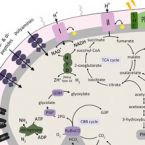
Abstract:
Sulphide-driven anoxygenic photosynthesis is an ancient microbial metabolism that contributes significantly to inorganic carbon fixation in stratified, sulphidic water bodies. Methods commonly applied to quantify inorganic carbon fixation by anoxygenic phototrophs, however, cannot resolve the contributions of distinct microbial populations to the overall process. We implemented a straightforward workflow, consisting of radioisotope labelling and flow cytometric cell sorting based on the distinct autofluorescence of bacterial photopigments, to discriminate and quantify contributions of co-occurring anoxygenic phototrophic populations to in situ inorganic carbon fixation in environmental samples. This allowed us to assign 89.3% ± 7.6% of daytime inorganic carbon fixation by anoxygenic phototrophs in Lake Rogoznica (Croatia) to an abundant chemocline-dwelling population of green sulphur bacteria (dominated by Chlorobium phaeobacteroides), whereas the co-occurring purple sulphur bacteria (Halochromatium sp.) contributed only 1.8% ± 1.4%. Furthermore, we obtained two metagenome assembled genomes of green sulphur bacteria and one of a purple sulphur bacterium which provides the first genomic insights into the genus Halochromatium, confirming its high metabolic flexibility and physiological potential for mixo- and heterotrophic growth.
On the evolution and physiology of cable bacteria.
2019 - Proc. Natl. Acad. Sci. U.S.A., 38: 19116-19125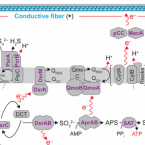
Abstract:
Cable bacteria of the family Desulfobulbaceae form centimeter-long filaments comprising thousands of cells. They occur worldwide in the surface of aquatic sediments, where they connect sulfide oxidation with oxygen or nitrate reduction via long-distance electron transport. In the absence of pure cultures, we used single-filament genomics and metagenomics to retrieve draft genomes of 3 marine Electrothrix and 1 freshwater Electronema species. These genomes contain >50% unknown genes but still share their core genomic makeup with sulfate-reducing and sulfur-disproportionating Desulfobulbaceae, with few core genes lost and 212 unique genes (from 197 gene families) conserved among cable bacteria. Last common ancestor analysis indicates gene divergence and lateral gene transfer as equally important origins of these unique genes. With support from metaproteomics of a Electronema enrichment, the genomes suggest that cable bacteria oxidize sulfide by reversing the canonical sulfate reduction pathway and fix CO using the Wood-Ljungdahl pathway. Cable bacteria show limited organotrophic potential, may assimilate smaller organic acids and alcohols, fix N, and synthesize polyphosphates and polyglucose as storage compounds; several of these traits were confirmed by cell-level experimental analyses. We propose a model for electron flow from sulfide to oxygen that involves periplasmic cytochromes, yet-unidentified conductive periplasmic fibers, and periplasmic oxygen reduction. This model proposes that an active cable bacterium gains energy in the anodic, sulfide-oxidizing cells, whereas cells in the oxic zone flare off electrons through intense cathodic oxygen respiration without energy conservation; this peculiar form of multicellularity seems unparalleled in the microbial world.
Draft Genome Sequence of Desulfosporosinus fructosivorans Strain 63.6F, Isolated from Marine Sediment in the Baltic Sea
2019 - Microbiology Resource Announcements, 8: e00427-1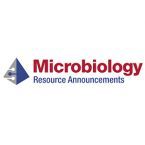
Abstract:
Desulfosporosinus fructosivorans strain 63.6FT is a strictly anaerobic, spore-forming, sulfate-reducing bacterium isolated from marine sediment in the Baltic Sea. Here, we report the draft genome sequence of D. fructosivorans 63.6FT.
Diversity decoupled from sulfur isotope fractionation in a sulfate reducing microbial community
2019 - Geobiology, 17: 660-67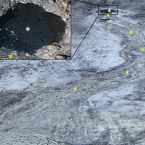
Abstract:
The extent of fractionation of sulfur isotopes by sulfate-reducing microbes is dictated by genomic and environmental factors. A greater understanding of species-specific fractionations may better inform interpretation of sulfur isotopes preserved in the rock record. To examine whether gene diversity influences net isotopic fractionation in situ, we assessed environmental chemistry, sulfate reduction rates, diversity of putative sulfur-metabolizing organisms by 16S rRNA and dissimilatory sulfite reductase (dsrB) gene amplicon sequencing, and net fractionation of sulfur isotopes along a sediment transect of a hypersaline Arctic spring. In situ sulfate reduction rates yielded minimum cell-specific sulfate reduction rates < 0.3 × 10-15 moles cell-1 day-1 . Neither 16S rRNA nor dsrB diversity indices correlated with relatively constant (38‰-45‰) net isotope fractionation (ε34 Ssulfide-sulfate ). Measured ε34 S values could be reproduced in a mechanistic fractionation model if 1%-2% of the microbial community (10%-60% of Deltaproteobacteria) were engaged in sulfate respiration, indicating heterogeneous respiratory activity within sulfate-reducing populations. This model indicated enzymatic kinetic diversity of Apr was more likely to correlate with sulfur fractionation than DsrB. We propose that, above a threshold Shannon diversity value of 0.8 for dsrB, the influence of the specific composition of the microbial community responsible for generating an isotope signal is overprinted by the control exerted by environmental variables on microbial physiology.
Draft Genome Sequence of Desulfosporosinus sp. Strain Sb-LF, Isolated from an acidic peatland in Germany
2019 - Microbiology Resource Announcements, 8: e00428-1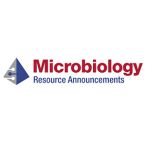
Abstract:
Desulfosporosinus sp. strain Sb-LF was isolated from an acidic peatland in Bavaria, Germany. Here, we report the draft genome sequence of the sulfate-reducing and lactate-utilizing strain Sb-LF.
Historical factors associated with past environments influence the biogeography of thermophilic endospores in Arctic marine sediments
2019 - Front Microbiol, 10: 245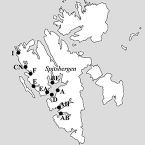
Abstract:
Selection by the local, contemporary environment plays a prominent role in shaping the biogeography of microbes. However, the importance of historical factors in microbial biogeography is more debatable. Historical factors include past ecological and evolutionary circumstances that may have influenced present-day microbial diversity, such as dispersal and past environmental conditions. Diverse thermophilic sulfate-reducing are present as dormant endospores in marine sediments worldwide where temperatures are too low to support their growth. Therefore, they are dispersed to here from elsewhere, presumably a hot, anoxic habitat. While dispersal through ocean currents must influence their distribution in cold marine sediments, it is not clear whether even earlier historical factors, related to the source habitat where these organisms were once active, also have an effect. We investigated whether these historical factors may have influenced the diversity and distribution of thermophilic endospores by comparing their diversity in 10 Arctic fjord surface sediments. Although community composition varied spatially, clear biogeographic patterns were only evident at a high level of taxonomic resolution (>97% sequence similarity of the 16S rRNA gene) achieved with oligotyping. In particular, the diversity and distribution of oligotypes differed for the two most prominent OTUs (defined using a standard 97% similarity cutoff). One OTU was dominated by a single ubiquitous oligotype, while the other OTU consisted of ten more spatially localized oligotypes that decreased in compositional similarity with geographic distance. These patterns are consistent with differences in historical factors that occurred when and where the taxa were once active, prior to sporulation. Further, the influence of history on biogeographic patterns was only revealed by analyzing microdiversity within OTUs, suggesting that populations within standard OTU-level groupings do not necessarily share a common ecological and evolutionary history.
Dark aerobic sulfide oxidation by anoxygenic phototrophs in anoxic waters.
2019 - Environ. Microbiol., 5: 1611-1626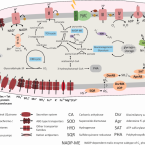
Abstract:
Anoxygenic phototrophic sulfide oxidation by green and purple sulfur bacteria (PSB) plays a key role in sulfide removal from anoxic shallow sediments and stratified waters. Although some PSB can also oxidize sulfide with nitrate and oxygen, little is known about the prevalence of this chemolithotrophic lifestyle in the environment. In this study, we investigated the role of these phototrophs in light-independent sulfide removal in the chemocline of Lake Cadagno. Our temporally resolved, high-resolution chemical profiles indicated that dark sulfide oxidation was coupled to high oxygen consumption rates of ~9 μM O ·h . Single-cell analyses of lake water incubated with CO in the dark revealed that Chromatium okenii was to a large extent responsible for aerobic sulfide oxidation and it accounted for up to 40% of total dark carbon fixation. The genome of Chr. okenii reconstructed from the Lake Cadagno metagenome confirms its capacity for microaerophilic growth and provides further insights into its metabolic capabilities. Moreover, our genomic and single-cell data indicated that other PSB grow microaerobically in these apparently anoxic waters. Altogether, our observations suggest that aerobic respiration may not only play an underappreciated role in anoxic environments but also that organisms typically considered strict anaerobes may be involved.
Long-term transcriptional activity at zero growth by a cosmopolitan rare biosphere member
2019 - mBio, 10: e02189-18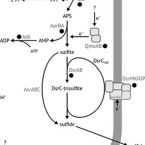
Abstract:
Microbial diversity in the environment is mainly concealed within the rare biosphere (all species with <0.1% relative abundance). While dormancy explains a low-abundance state very well, the mechanisms leading to rare but active microorganisms remain elusive. We used environmental systems biology to genomically and transcriptionally characterise Candidatus Desulfosporosinus infrequens, a low-abundance sulfate-reducing microorganism cosmopolitan to freshwater wetlands, where it contributes to cryptic sulfur cycling. We obtained its near-complete genome by metagenomics of acidic peat soil. In addition, we analyzed anoxic peat soil incubated under in situ-like conditions for 50 days by Desulfosporosinus-targeted qPCR and metatranscriptomics. The Desulfosporosinus population stayed at a constant low abundance under all incubation conditions, averaging 1.2 × 10⁶ 16S rRNA gene copies per cm³ soil. In contrast, transcriptional activity of Ca.D. infrequens increased at day 36 by 56- to 188-fold when minor amendments of acetate, propionate, lactate, or butyrate were provided with sulfate, as compared to the no-substrate-control. Overall transcriptional activity was driven by expression of genes encoding ribosomal proteins, energy metabolism and stress response but not by expression of genes encoding cell growth-associated processes. Since our results did not support growth of these highly active microorganisms in terms of biomass increase or cell division, they had to invest their sole energy for maintenance, most likely counterbalancing acidic pH conditions. This finding explains how a rare biosphere member can contribute to a biogeochemically relevant process while remaining in a zero growth state over a period of 50 days.
Sulfate is transported at significant rates through the symbiosome membrane and is crucial for nitrogenase biosynthesis.
2019 - Plant Cell Environ., 4: 1180-1189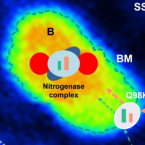
Abstract:
Legume-rhizobia symbioses play a major role in food production for an ever growing human population. In this symbiosis, dinitrogen is reduced ("fixed") to ammonia by the rhizobial nitrogenase enzyme complex and is secreted to the plant host cells, whereas dicarboxylic acids derived from photosynthetically produced sucrose are transported into the symbiosomes and serve as respiratory substrates for the bacteroids. The symbiosome membrane contains high levels of SST1 protein, a sulfate transporter. Sulfate is an essential nutrient for all living organisms, but its importance for symbiotic nitrogen fixation and nodule metabolism has long been underestimated. Using chemical imaging, we demonstrate that the bacteroids take up 20-fold more sulfate than the nodule host cells. Furthermore, we show that nitrogenase biosynthesis relies on high levels of imported sulfate, making sulfur as essential as carbon for the regulation and functioning of symbiotic nitrogen fixation. Our findings thus establish the importance of sulfate and its active transport for the plant-microbe interaction that is most relevant for agriculture and soil fertility.
Transcriptomic and proteomic insight into the mechanism of cyclooctasulfur- versus thiosulfate-oxidation by the chemolithoautotroph Sulfurimonas denitrificans.
2019 - Environ. Microbiol., 1: 244-258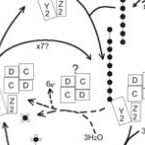
Abstract:
Chemoautotrophic bacteria belonging to the genus Sulfurimonas (class Campylobacteria) were previously identified as key players in the turnover of zero-valence sulfur, a central intermediate in the marine sulfur cycle. S. denitrificans was further shown to be able to oxidize cyclooctasulfur (S ). However, at present the mechanism of activation and metabolism of cyclooctasulfur is not known. Here, we assessed the transcriptome and proteome of S. denitrificans grown with either thiosulfate or S as the electron donor. While the overall expression profiles under the two growth conditions were rather similar, distinct differences were observed that could be attributed to the utilization of S . This included a higher abundance of expressed genes related to surface attachment in the presence of S , and the differential regulation of the sulfur-oxidation multienzyme complex (SOX), which in S. denitrificans is encoded in two gene clusters: soxABXY Z and soxCDY Z . While the proteins of both clusters were present with thiosulfate, only proteins of the soxCDY Z were detected at significant levels with S . Based on these findings a model for the oxidation of S is proposed. Our results have implications for interpreting metatranscriptomic and -proteomic data and for the observed high level of diversification of soxY Z among sulfur-oxidizing Campylobacteria.



